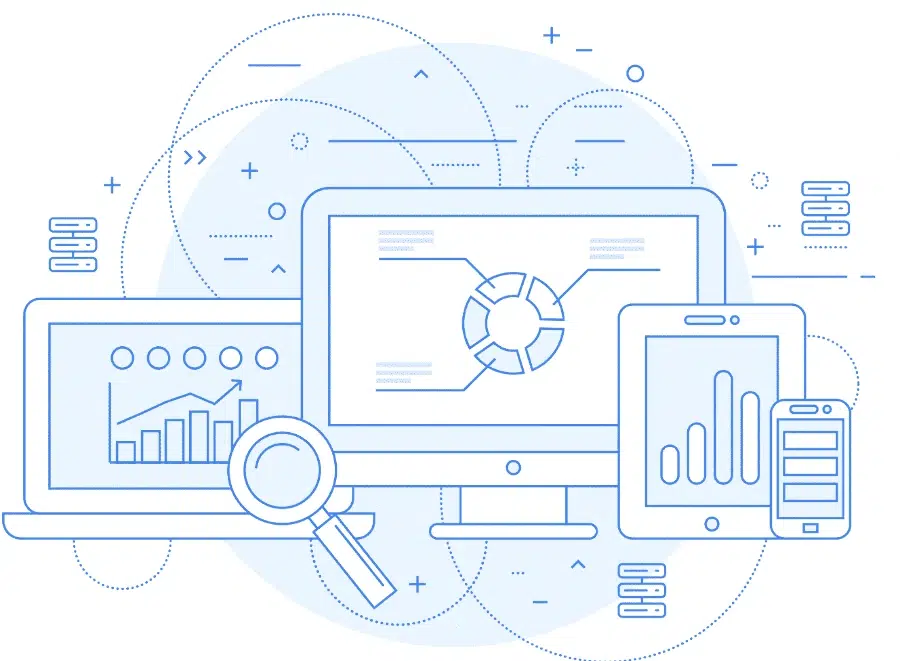It's no longer about reducing costs on Software renewals - it's about minimizing the price increases you will see.
Introduction:
As the software landscape continues to evolve, the dynamics of negotiating renewals with major vendors have shifted dramatically. Gone are the days when organizations could confidently walk into a negotiation expecting to secure significant discounts. Today, the focus has shifted from reducing costs to minimizing inevitable price increases. For the remainder of 2024 and into 2025, the primary objective for any organization is not just about cutting deals but about strategic damage control.
The reason for this shift is simple: software vendors have become more assertive, data-driven, and sophisticated in their approach to renewals. Whether you’re dealing with Microsoft, Broadcom, VMware, Oracle, or Adobe, the playbook has changed, and so must your strategies.
1. The Shift from Cost Reduction to Minimizing Increases
Historical Context
In the past, the focus during software renewals was often on reducing overall costs. Organizations would leverage their purchasing power, threaten to switch vendors, or use other tactics to negotiate better terms. However, the tide has turned. Vendors like Microsoft have invested heavily in training their commercial teams to be more assertive and less willing to concede discounts. The days of expecting a 20% discount just for asking are over.
Vendor Tactics Evolution
Microsoft and other major vendors have adopted a more strategic approach to renewals. They are now employing tactics such as ramped discounts, which gradually reduce over time, and multi-level selling, where they engage with various departments within your organization simultaneously. This approach not only creates internal pressure but also makes it harder for the IT department to control the narrative.
Additionally, vendors are leveraging their data on your consumption patterns to strengthen their position. For example, if you’re a heavy user of Azure or Microsoft 365, Microsoft knows this and will use it to justify price increases.
Industry-Wide Impact
This trend is not limited to Microsoft. Vendors across the board have become more aggressive in their renewal strategies. Broadcom’s acquisition of VMware has led to significant price hikes, with some customers facing increases of 300-400%. Oracle has changed its Java licensing from a free model to a paid one, significantly increasing costs for many organizations. Adobe, too, has moved away from perpetual licenses, pushing customers toward higher-priced subscription models with AI integrations.
Expanded Case Study: Microsoft’s Multi-Level Approach
A mid-sized manufacturing firm recently faced a challenging renewal process with Microsoft. While the IT department was in the midst of negotiating an Azure renewal, Microsoft’s sales team simultaneously engaged the finance and operations departments, pitching the benefits of the Power Platform. This multi-level selling strategy created pressure on the IT team as other departments began pushing for a quick resolution. Ultimately, the firm had to settle for a smaller discount than anticipated, illustrating how Microsoft’s tactics can disrupt internal alignment and lead to less favorable outcomes.
2. Preparing for Negotiations: Data as Your Strongest Asset
Deep Dive into Data Preparation
In today’s negotiation environment, data is your most powerful tool. The more informed you are about your software usage, licensing, and future needs, the better positioned you will be to counter vendor tactics and minimize price increases.
Inventory and Usage Analysis:
Start with a comprehensive audit of your current software usage. This includes identifying all licenses in use, evaluating underutilized or redundant licenses, and understanding consumption patterns across the organization. Tools like Microsoft’s License Statement (MLS) or third-party SAM tools can be invaluable in gathering this data.
License Optimization Strategies:
Once you have a clear picture of your software inventory, the next step is optimization. This could involve consolidating licenses to reduce overlap, switching to subscription models where appropriate, or exploring alternative vendors for specific functionalities. For example, if you’re using expensive on-premises software, consider whether a move to the cloud could offer long-term savings.
Technical Optimization:
Beyond licensing, look at the technical aspects of your software environment. Are there opportunities to reduce costs through technical optimization? For instance, in cloud environments, reducing sprawl, right-sizing workloads, and implementing automation can lead to significant savings. These technical optimizations can then be used as leverage during negotiations.
Building a Negotiation-Ready Dataset
To effectively negotiate, you need to build a dataset that supports your position. This dataset should include detailed usage statistics, license costs, projected growth, and potential savings from optimization efforts. Presenting this data to vendors not only shows that you’re well-prepared but also provides a factual basis for your requests.
Example: Data-Driven Negotiation Success
A global retail chain preparing for its annual software renewal with Microsoft conducted a thorough audit of its Azure environment. By identifying underutilized resources and optimizing workloads, the company uncovered over $500,000 in potential savings. Armed with this data, the company entered negotiations with Microsoft and was able to secure more favorable terms, significantly reducing the expected price increase.
3. Understanding and Countering Vendor Tactics
Detailed Analysis of Vendor Tactics
Vendors are using a variety of tactics to maximize their revenue during renewals. Understanding these tactics is the first step in countering them effectively.
Microsoft:
Microsoft’s approach to renewals often involves staged discounts, where initial discounts are offered only to be reduced in future renewals. Additionally, Microsoft is known for leveraging high-usage data to justify price increases, particularly in cloud services like Azure. They also impose penalties for late renewals, such as a 3% price increase, to pressure customers into agreeing to terms quickly.
Broadcom & VMware:
Following Broadcom’s acquisition of VMware, customers have seen a dramatic shift in pricing strategies. The move from perpetual to subscription licenses has led to significant price increases, with some organizations facing 300-400% hikes. Broadcom has also simplified VMware’s licensing models, reducing the number of SKUs but bundling products together, making it difficult for customers to purchase only what they need.
Oracle and Adobe:
Oracle’s Java licensing changes have caught many organizations off guard. What was once a free product now requires licensing based on the number of named users or processors, leading to higher costs. Adobe, on the other hand, has transitioned to subscription-only models and integrated AI into its products, which has increased prices and reduced customization options for customers.
Counter-Tactics
To counter these vendor strategies, organizations need to be proactive and strategic in their approach.
Data Leverage:
Use your consumption data to counter vendor claims. For instance, if Microsoft argues for a price increase based on high usage, counter with data showing optimization efforts that reduce that usage. This not only weakens their position but also shows that you’re actively managing your software environment.
Negotiation Framework:
Develop a clear framework for negotiations that includes your data analysis, understanding of vendor motivations, and potential concessions. For example, if you know that Microsoft is pushing a new product like Co-Pilot, consider negotiating for discounts on existing products in exchange for adopting the new product.
Escalation Strategies:
Don’t be afraid to escalate negotiations if necessary. This could involve engaging higher-level executives within your organization who have relationships with the vendor or even considering a temporary shift to alternative solutions as a bargaining chip.
Case Study: Facing 300-400% Increases with VMware
A Utilities company recently faced a daunting challenge when renewing its VMware licenses. They were initially presented with a 300% price increase due to VMware’s transition to subscription licenses under Broadcom’s ownership. However, by leveraging data from a detailed usage analysis, exploring alternative solutions, and re-architecting, they were able to negotiate a lower price increase, ultimately settling on a 150% hike. While still significant, this was a far better outcome than initially proposed.
4. Strategic Negotiation Approaches for 2024-2025
Developing a Comprehensive Negotiation Playbook
In the current environment, it’s essential to approach negotiations with a well-prepared playbook. This playbook should include everything from role assignments to escalation pathways and should be tailored to your organization’s specific needs and vendor relationships.
Role Assignments:
Assign specific roles within your negotiation team. This includes a Single Point of Contact (SPOC) who will manage all communications with the vendor, ensuring consistency and clarity. Other roles might consist of a data analyst, a technical expert, and a financial officer, all working together to build a strong negotiation position.
Escalation Pathways:
Develop a clear escalation plan for when negotiations hit a roadblock. This could involve escalating the issue within your organization, bringing in senior executives to engage with the vendor, or even exploring alternative vendors if negotiations stall. Understanding the vendor’s internal hierarchy and knowing when to engage higher-ups can also be an effective strategy.
Negotiation Framework:
Create a framework for structuring your negotiations. This should include:
- Data Analysis: Use your data to justify your requests and counter vendor claims.
- Vendor Motivations: Understand what drives the vendor’s pricing and sales strategies, and use this knowledge to your advantage.
- Concessions: Identify areas where you can make concessions without compromising your overall position. For example, consider agreeing to a longer contract length (e.g., five years) in exchange for better pricing.
Example: Building a Negotiation Team
A large financial institution preparing for its Microsoft renewal created a cross-functional negotiation team, including representatives from IT, finance, legal, and procurement. This team worked together to develop a unified strategy, which included an escalation plan involving senior executives who had relationships with Microsoft’s leadership. This approach helped the organization secure a more favorable agreement, demonstrating the power of a well-coordinated negotiation effort.
Leveraging External Influences
External influences, such as board-level involvement or industry partnerships, can also play a critical role in negotiations. For instance, if your board members have relationships with vendor executives, leveraging these connections can help escalate your concerns and potentially lead to better terms.
Example: Leveraging Board Influence
In a recent negotiation with Oracle, a technology firm was able to secure more favorable terms by involving a board member who had a longstanding relationship with Oracle’s CEO. By escalating the discussion to this level, the firm was able to negotiate a significant reduction in the proposed price increase, illustrating the value of leveraging external relationships.
5. Holistic Cost Analysis and Strategic Purchasing
Broader Cost Analysis Techniques
When negotiating software renewals, it’s crucial to look beyond individual product discounts and analyze the total cost of ownership (TCO). This includes considering long-term costs, potential future price increases, and the overall impact on your organization’s budget.
Total Deal Value:
Evaluate the overall cost of the agreement, including potential future increases, rather than just the immediate savings. For example, a vendor may offer a discount on a single product but raise prices on other products or services, leading to a higher overall cost.
Strategic Purchasing Considerations:
Consider strategic purchases that may seem counterintuitive, such as buying additional licenses or shelfware, if they align with your overall strategy and offer substantial value. For instance, purchasing additional licenses might secure a more significant discount across your entire agreement, resulting in net savings.
Incentivizing Savings:
Explore opportunities for additional discounts through non-monetary incentives, such as participating in vendor case studies, co-marketing initiatives, or providing testimonials. However, weigh these opportunities against the long-term cost implications and ensure they align with your overall strategy.
Visual Example: Cost Comparison
A detailed table comparing different renewal scenarios and showing the impact of various negotiation strategies on overall costs could be highly effective here. This table could illustrate how different purchasing strategies (e.g., volume purchases, bundling, long-term contracts) affect the TCO over three years.
Conclusion
Recap of Key Strategies
As we navigate the remainder of 2024 and move into 2025, the landscape for software renewals is more challenging than ever. Vendors are better prepared, more strategic, and less willing to offer the kinds of deals that were common just a few years ago. However, by focusing on minimizing price increases rather than simply trying to reduce costs, organizations can still achieve favorable outcomes.
Final Thoughts
The key to success in this environment is preparation, flexibility, and a focus on the total value of the deal. By understanding your needs, leveraging data, and employing a strategic approach, you can navigate the complexities of software renewals and emerge with agreements that protect your organization’s budget and long-term interests.











 Why Keeping a Bad Sales Rep Could Cost You
Why Keeping a Bad Sales Rep Could Cost You




